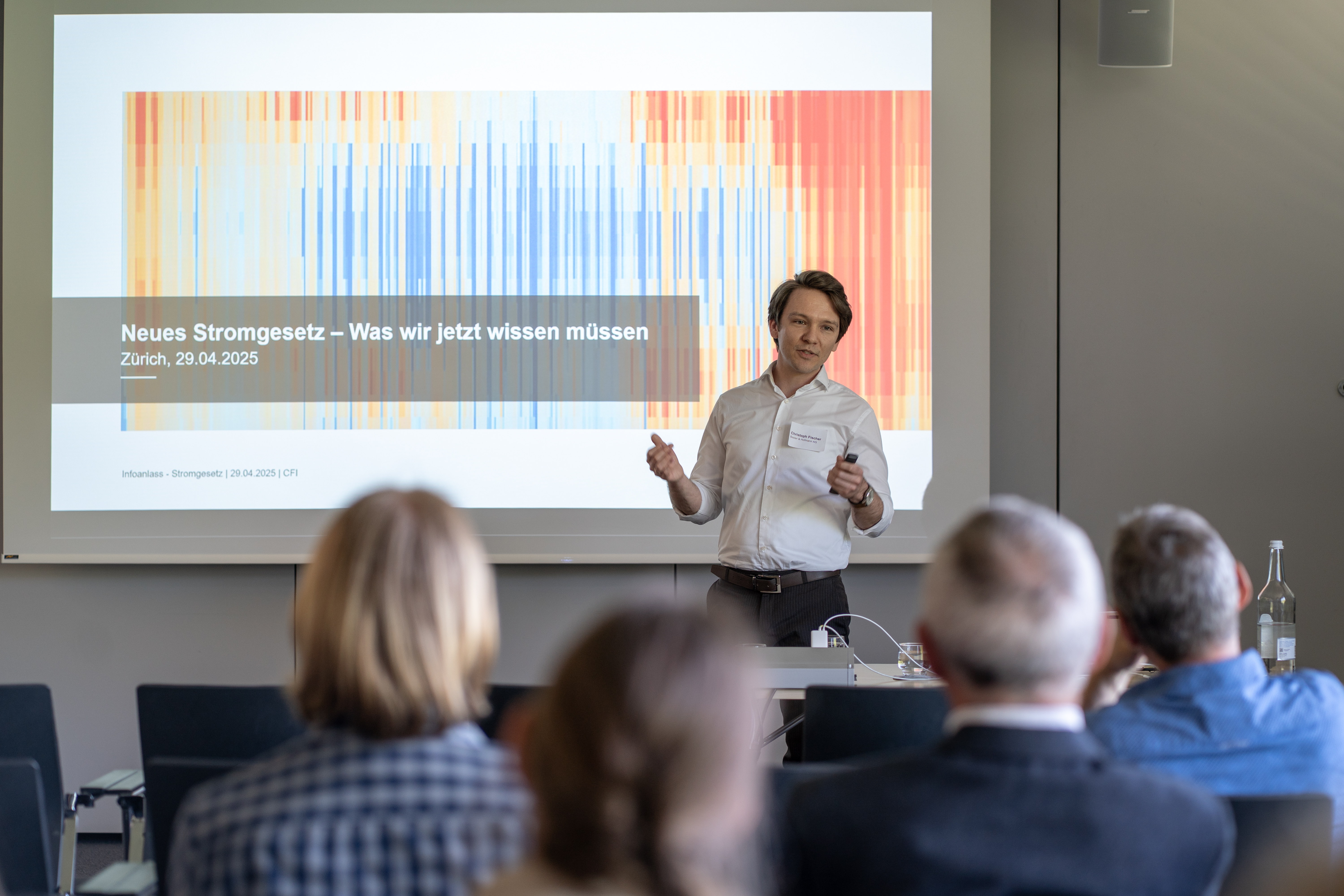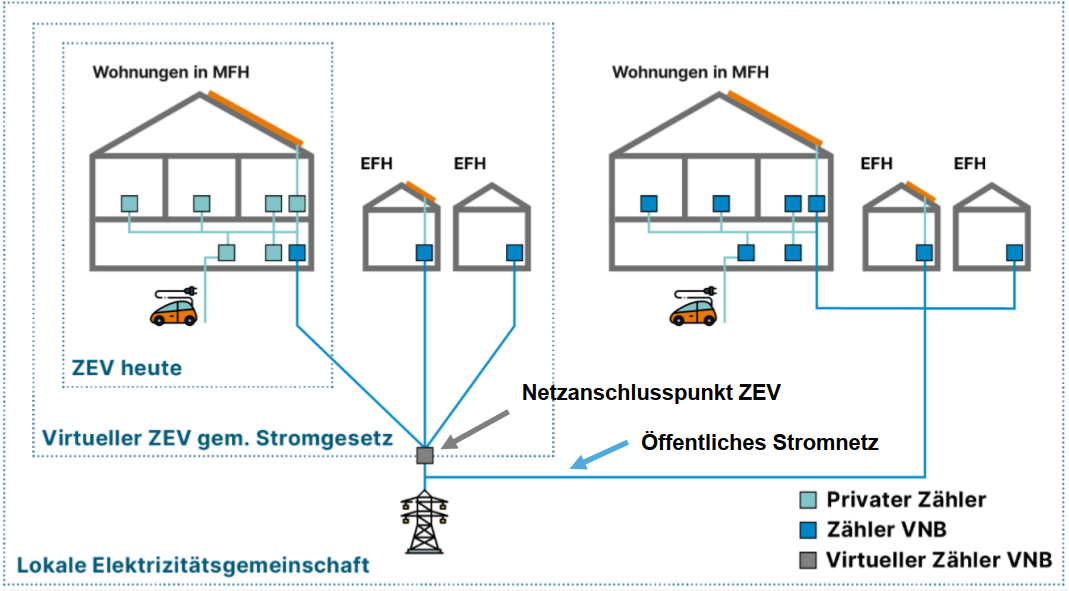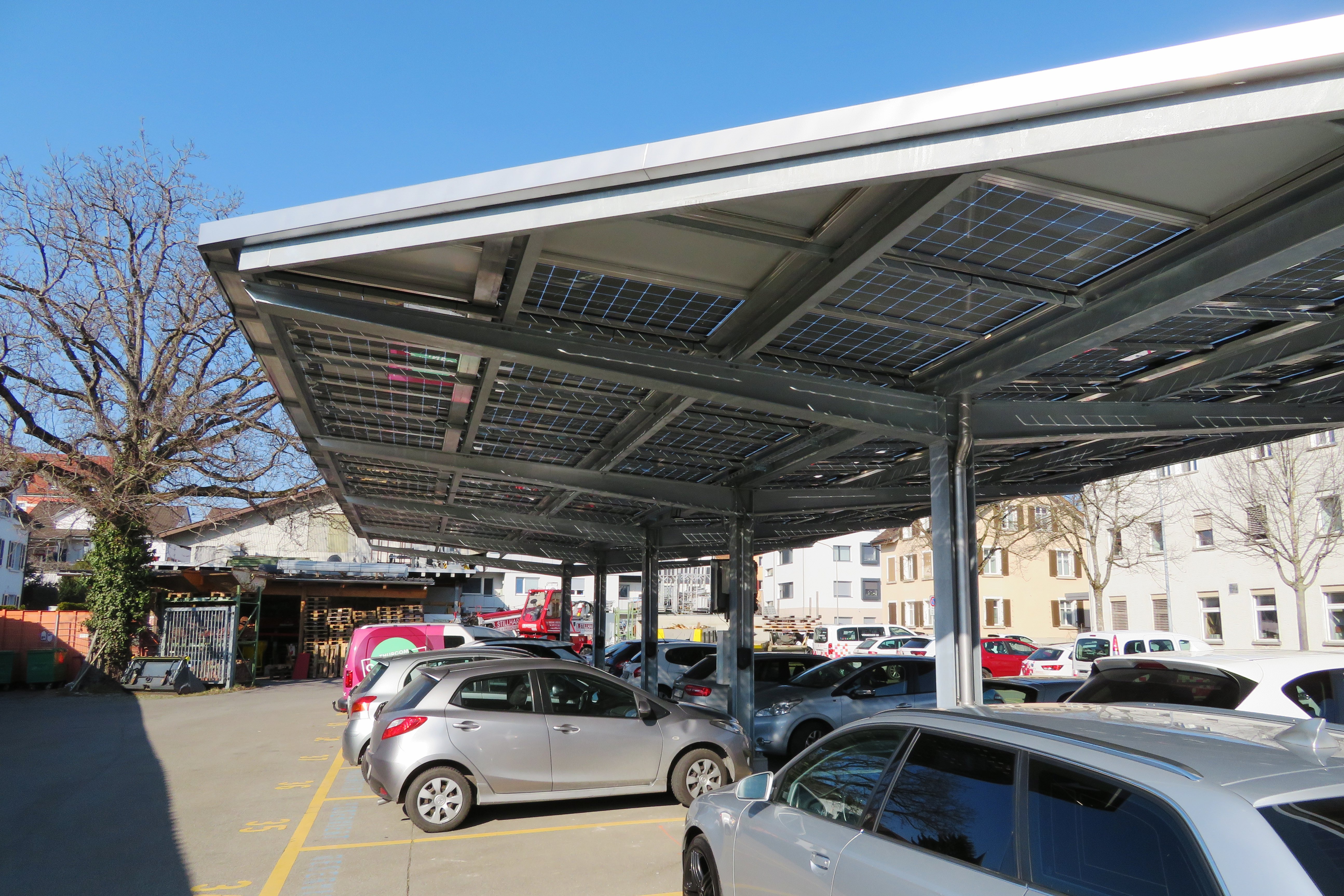New Electricity Act: What companies need to know now

In 2024, Swiss voters approved a new Electricity Act that promotes domestic and renewable energy. The law brings opportunities for companies, particularly in the area of photovoltaics. Companies can tap into new economic potential if they get it right. Basler & Hofmann informed representatives from companies and municipalities about this at a customer event.
The new Federal Act on a Secure Supply of Electricity from Renewable Energies has been in force since 2025 - with concrete consequences for companies and municipalities. The new Electricity Act has an ambitious target: electricity production from renewable energy is to be increased to 35 terawatt hours (TWh) by 2035 - not including hydropower. Today, only around 10 TWh come from renewables. Most of the increase is to come from solar energy. The potential for photovoltaics (PV) systems is therefore huge. Or as Christoph Fischer, project management at Basler & Hofmann, said at the customer event on April 29, 2025:
What will change for companies?
The new ordinances that clarify the Electricity Act are gradually coming into force. The new Energy Ordinance (EnV) and the new Energy Promotion Ordinance (EnFV) have been in force since January 1, 2025: PV systems can now be defined as "national interest" in cantonal spatial planning strategies if they meet certain requirements. And - particularly interesting for companies and municipalities - there are new subsidies, for example for PV systems on parking lots and those with a steep angle of inclination (from 75°), as is the case with façade systems.
In addition, expanded local associations are now possible, in which neighbors can obtain energy from a building's solar system. The new associations are called "virtual associations for own consumption"(vZEV) and offer companies the opportunity to not only use their self-produced solar power in their own building (and make it available to tenants, for example), but also to sell the electricity to neighbors in a larger radius. The new Energy Act thus provides an incentive to produce and consume more energy locally. This will also protect the transmission grid from overloading.
The Spatial Planning Act will be amended on July 1, 2025. A building permit procedure will then no longer be required for sufficiently adapted solar installations on façades.
And on January 1, 2026, the new Electricity Supply Ordinance (StromVV) will come into force. Among other things, it will bring changes to the feed-in tariff for electricity from renewable energies: Firstly, the remuneration for feeding electricity into the national grid will now be based on market prices and billing will be more frequent (quarterly rather than annually). Secondly, small to medium-sized photovoltaics systems (up to 150 kilowatts) are now subject to a uniform minimum remuneration, which serves to protect against very low market prices. However, many industry associations agree that many systems cannot be amortized with this minimum remuneration. The stronger market price orientation from 2026 is likely to lead to more uncertainty regarding income overall.
For companies that operate PV systems, the question therefore arises: how can they become less dependent on feed-in tariffs and continue to operate their PV systems economically in the future?

Exploiting hidden potential and opportunities
At the Basler & Hofmann information event, the main focus was on three approaches to exploiting new opportunities:
- Form new "virtual associations for self-consumption" (vZEV) and local electricity communities (LEG);
- Install battery storage systems and generate additional revenue by feeding stored solar energy into the standard electricity market;
- Set up photovoltaics systems above parking lots.
Market your own electricity locally - via vZEV and LEG
With the revised Electricity Supply Act, companies with PV systems can now sell their electricity to their neighbors and - from 2026 as a result of the new StromVV - even market it to even larger local electricity communities (LEG), for example within an entire municipality. Participants in local electricity communities can use the public electricity grid to supply each other with self-generated solar power. For customers, electricity from local associations is generally cheaper than electricity from the public grid.

Install battery storage
Companies with PV systems that want to become less dependent on feed-in tariffs should increase their own consumption. Battery storage systems can help with this. Better framework conditions apply to them as a result of the new Energy Act. For example, battery storage systems have been exempt from the grid fee obligation since 2025 - for the proportion of electricity that was previously charged from the grid and then fed back into the grid.
This is also an advantage: such a battery not only serves as storage for personal use, but can also be made available to the transmission system operator Swissgrid so that it can store energy or draw energy from it when needed. According to Michael Seeholzer, CEO of Virtual Global Trading AG, this allows companies to generate additional revenue in order to amortize their investment in a PV system and a battery. Seeholzer sees battery storage systems as important "enablers of the energy transition", as he said at the Basler & Hofmann event.
Setting up photovoltaics systems in parking lots
Even a company parking lot can make a contribution to the energy transition. Eric Langenskiöld, head expert for photovoltaics at Basler & Hofmann, knows how. In his opinion, the potential for solar systems in parking lots is huge. At the event, he explained to the guests from companies and municipalities present what requirements need to be met in order to install PV systems on parking lots, and he showed which design variants are possible.
One design variant, the vertical PV system, aroused particular interest. This is because it benefits twice from new subsidies under the Energy Act: on the one hand from the parking lot bonus and on the other from the bonus for PV systems with a higher angle of inclination.
Solar systems on parking lots have other positive side effects. They provide shade and cooling for parked cars and protect them from ice, hail and other environmental influences. Last but not least, they can be combined with other systems, such as lighting systems or e-mobility charging stations.
![[English] Carport mit Solaranlage](/fileadmin/_processed_/a/9/csm_Photovoltaik_Carport_Energiegesetz_IMG_0040_52ea143e28.jpg)



